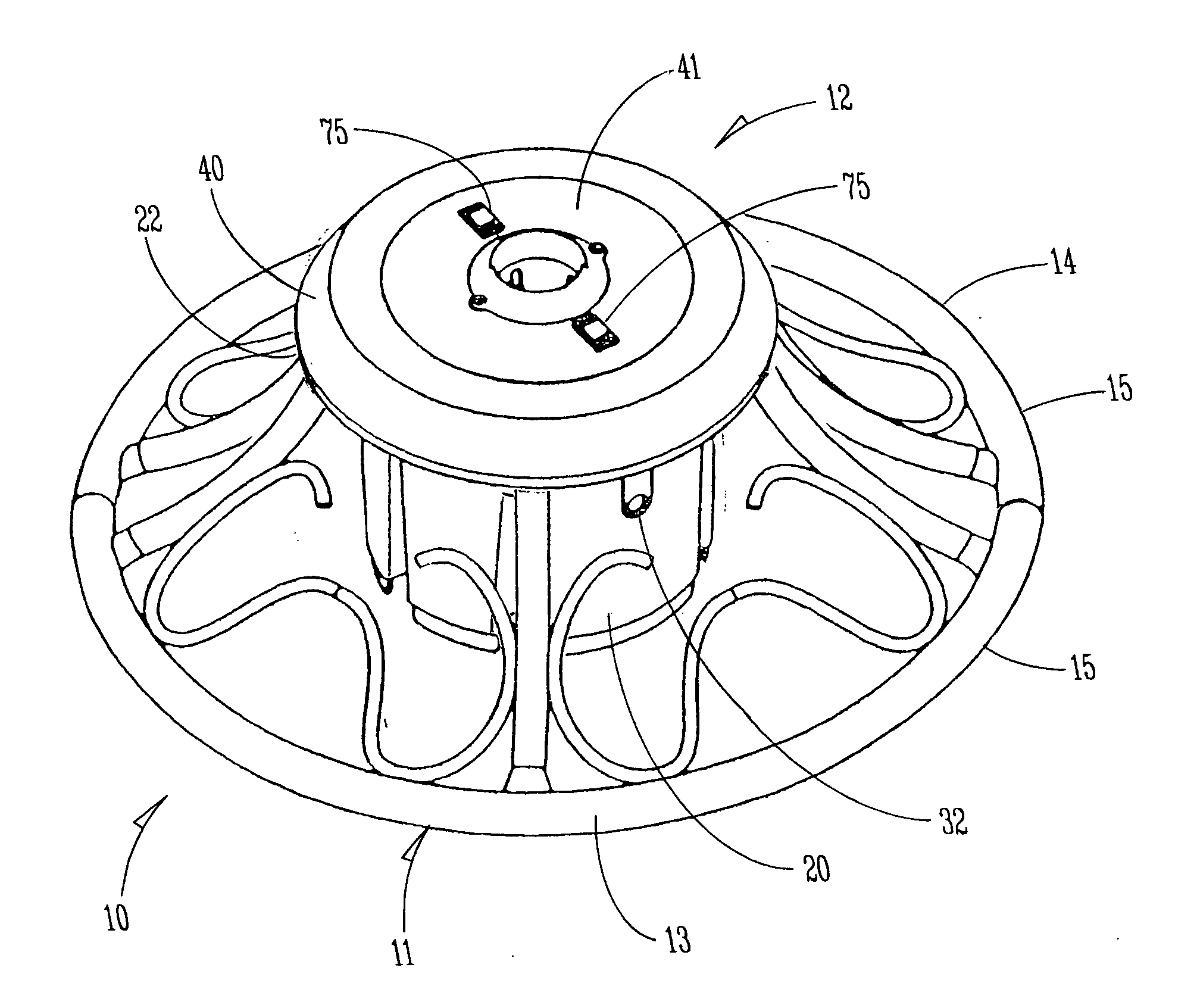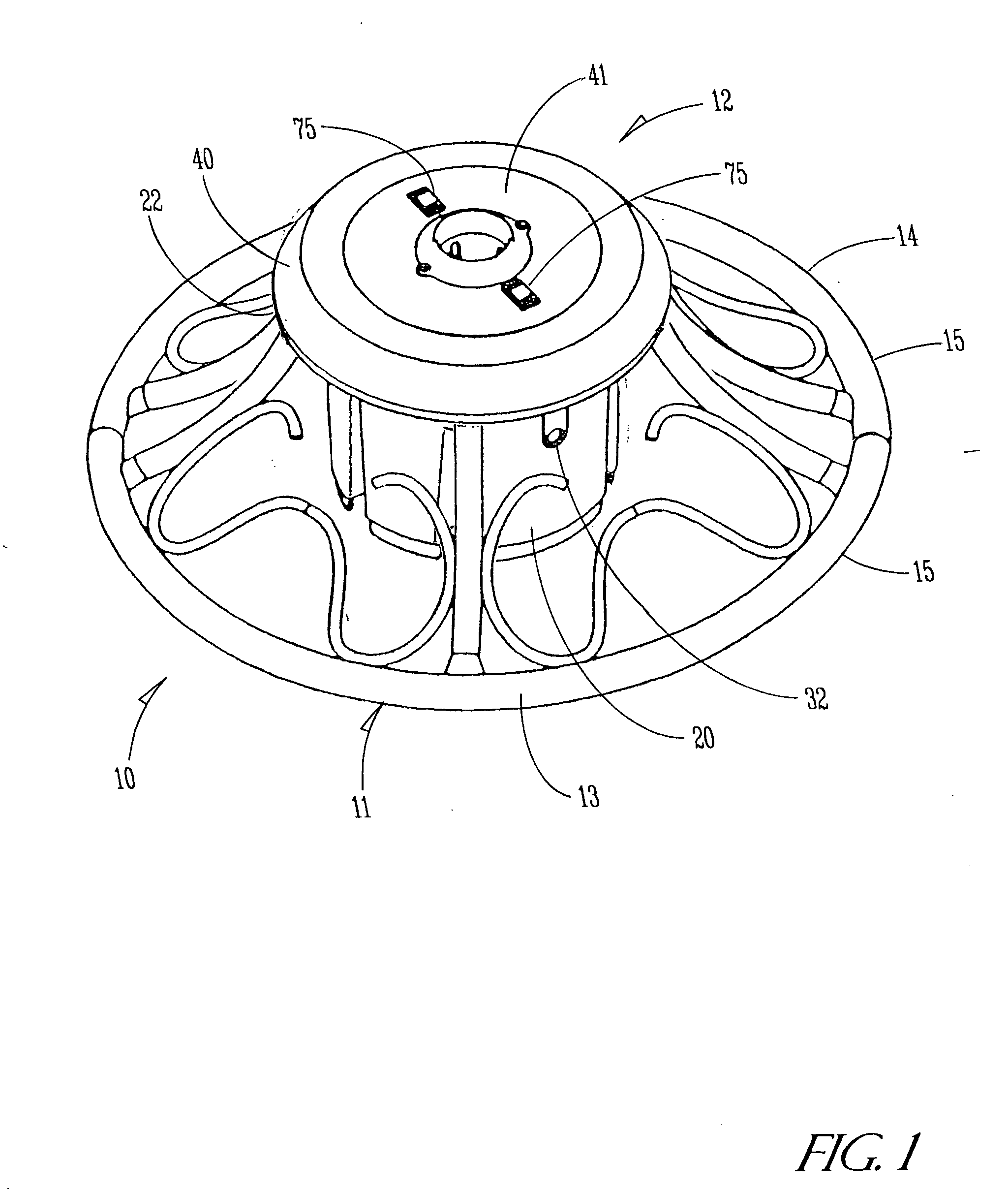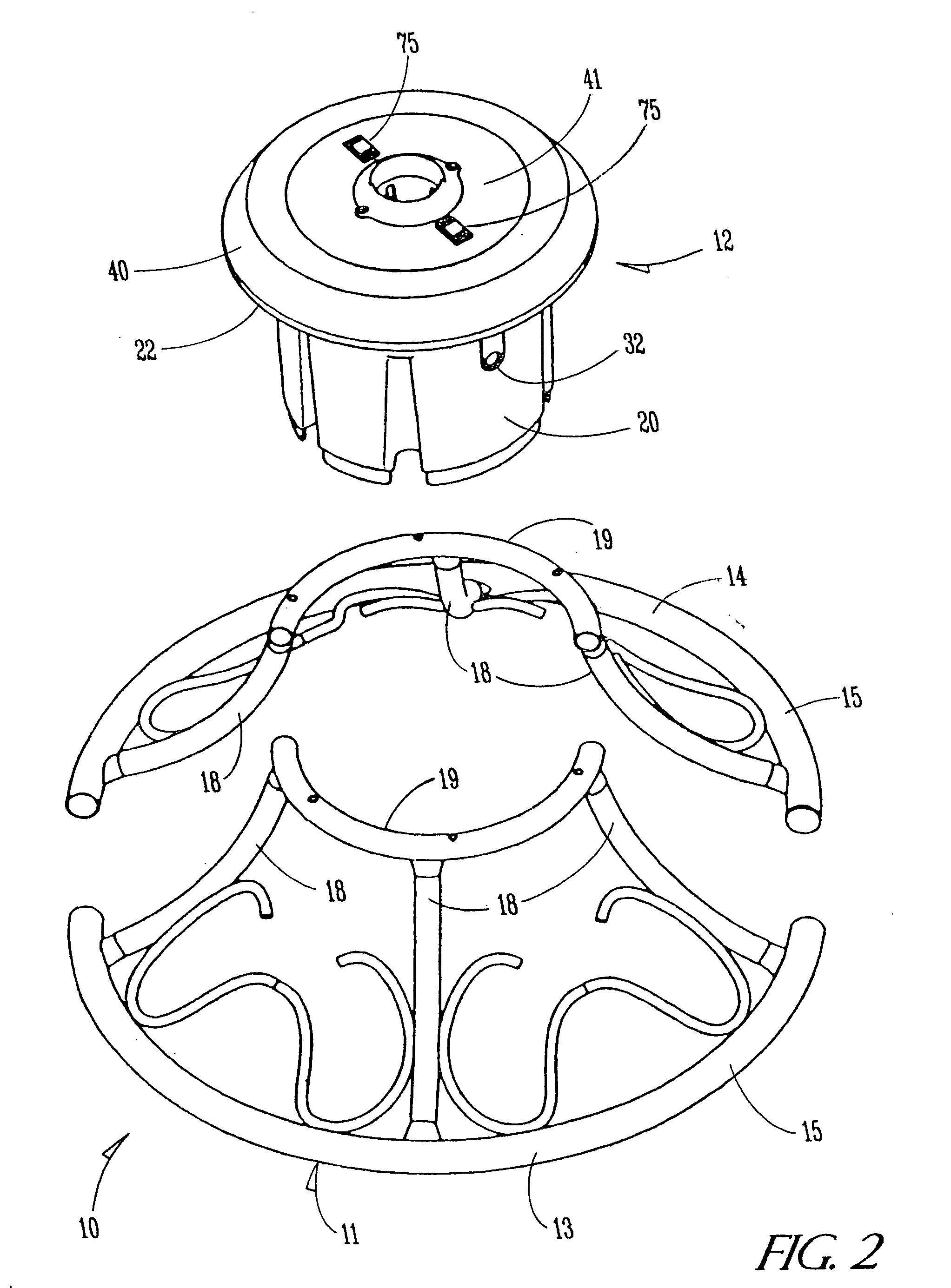Revolving support stand for decorative display
- Summary
- Abstract
- Description
- Claims
- Application Information
AI Technical Summary
Benefits of technology
Problems solved by technology
Method used
Image
Examples
Embodiment Construction
[0020] Referring now to the drawings and with reference first to FIGS. 1 and 2, a preferred embodiment of an improved revolving support stand of the present invention is shown generally at 10 and is adapted preferably for supporting the trunk of a decorative display such as a Christmas tree (not shown). The support stand 10 includes a support base 11 and a rotational unit 12 that is elevated in an off-the-ground position by the base 11.
[0021] Preferably the base 11 is divided into two equal mirror image sections 13 and 14 that each include curved, rod shaped feet 15 that provide, when located adjacent to one another, a substantially circular bottom ring 16 for engaging the surface upon which the stand 10 is supported, such as the floor of a building. Extending upwardly in each section 13 and 14 are preferably three arcuately shaped side members 18 that terminate in top ring portions 19 that are designed to engage and support the rotational unit 12 as will be described in further de...
PUM
 Login to View More
Login to View More Abstract
Description
Claims
Application Information
 Login to View More
Login to View More - R&D
- Intellectual Property
- Life Sciences
- Materials
- Tech Scout
- Unparalleled Data Quality
- Higher Quality Content
- 60% Fewer Hallucinations
Browse by: Latest US Patents, China's latest patents, Technical Efficacy Thesaurus, Application Domain, Technology Topic, Popular Technical Reports.
© 2025 PatSnap. All rights reserved.Legal|Privacy policy|Modern Slavery Act Transparency Statement|Sitemap|About US| Contact US: help@patsnap.com



